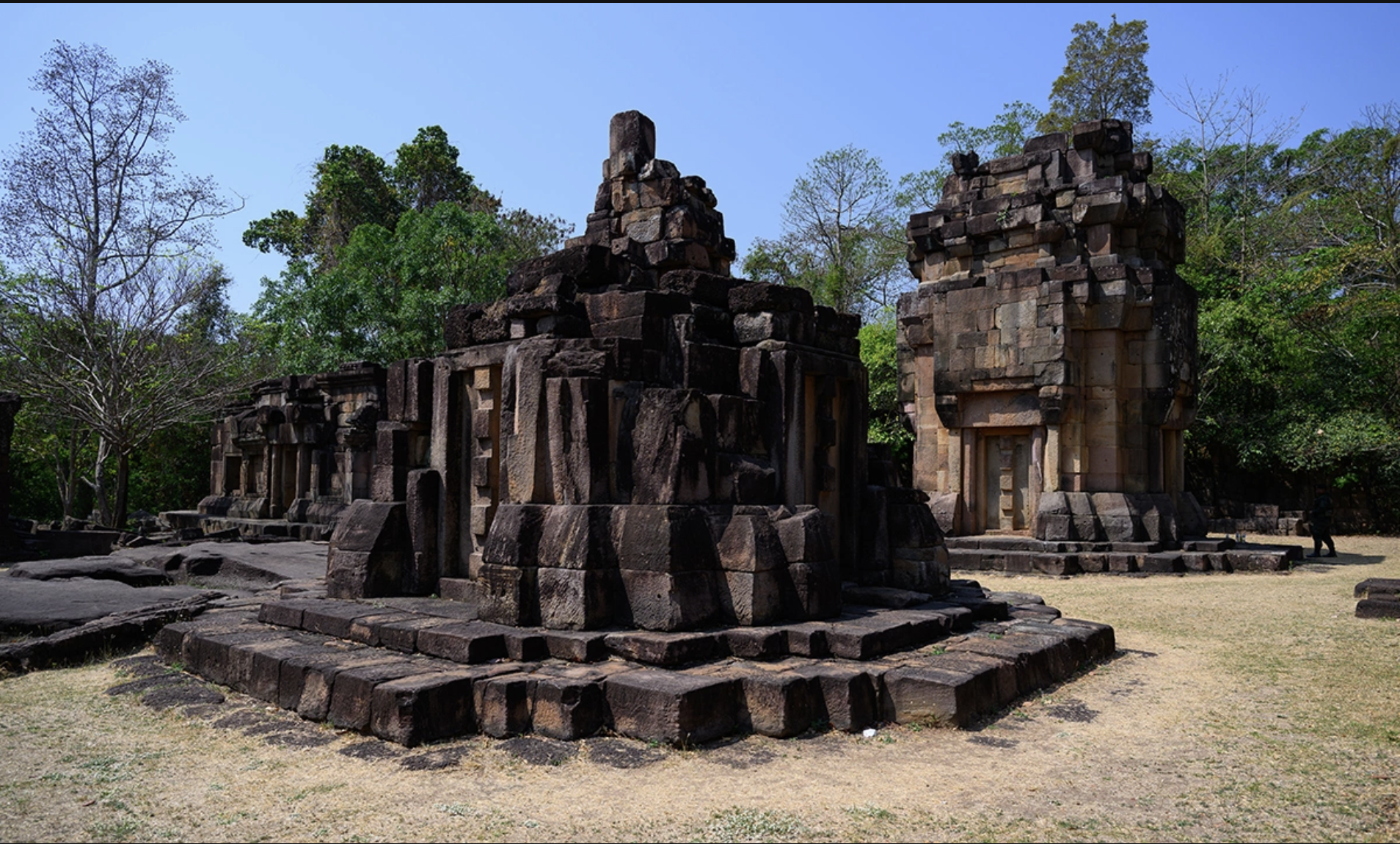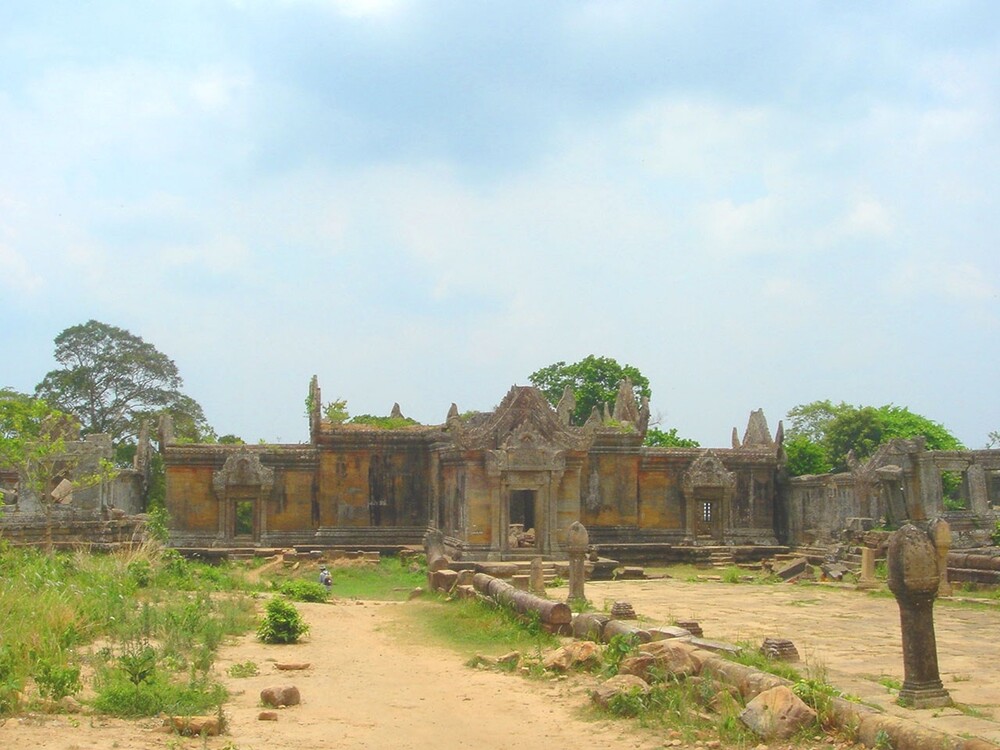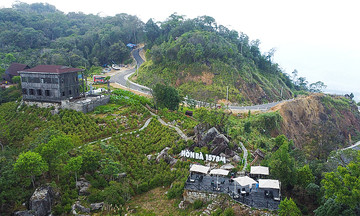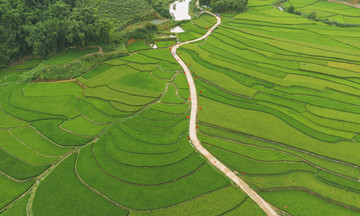The Ta Muen Temple Complex
The Ta Muen temple complex consists of three temples: Ta Muen Thom, Ta Muen Toch, and Ta Kwai, with Ta Muen Thom being the largest. On 24/7, clashes erupted here after Cambodian military spokesperson Maly Socheata accused Thai soldiers of violating an agreement by entering the temple area and erecting barbed wire fences, preventing tourists from accessing the site.
 |
Location of Ta Muan Thom/Ta Muen Thom temple and other disputed temples between Cambodia and Thailand. Graphics: CNA |
Ta Muen Thom Temple
Prasat Ta Muen Thom temple, also known as Ta Muen Thom in Thai, was built during the reign of King Udayadityavarman II (1050-1066) and dedicated to the god Shiva. Located deep in the forests of Surin province (Thailand), the structure is part of an ancient temple route connecting Angkor (Cambodia) with Phimai (Thailand). Cambodia claims ownership based on the borders of the Khmer Empire era, while Thailand asserts that the temple lies within its territory.
 |
Towers within Ta Muen Thom temple in a photo taken on 5/3. Photo: Reuters |
The temple, constructed from laterite and sandstone, is arranged in a rectangular shape facing south – a rare feature in Khmer architecture, which typically favors an east-facing orientation. Within the complex are a statue of the bull Nandi and a natural stone representing the linga, symbolizing Shiva's creative life force. Sacred water was once channeled from the linga for rituals. The system of ancillary buildings and resting places for pilgrims suggests the structure once served as a regional religious center.
Ta Muen Toch Temple
Located nearly 300 m from Ta Muen Thom, Ta Muen Toch is the second stop in the cluster of three ancient Khmer temples near the Thai-Cambodian border. Smaller than the main Ta Muen Thom temple, Ta Muen Toch is built of sandstone with a simpler design. The temple faces south, a common characteristic of ancient Khmer religious structures, meant to connect the spiritual symbol with the sacred land of Angkor.
Ta Muen Toch exhibits a timeless beauty, with moss-covered stone walls and a tranquil atmosphere that evokes a sense of stepping into a forgotten world. Visitors often pause to admire the carvings on the stones before continuing their journey to explore the nearby Ta Muen Thom.
Ta Kwai Temple
About 10 km southeast of Ta Muen Toch, Ta Kwai temple sits close to the Thai-Cambodian border. Unlike the larger, more intact temples, Ta Kwai now consists of only a few stone walls and foundations, hidden within the forest.
However, this untouched isolation attracts adventurous travelers and archaeology enthusiasts. The temple was once part of a network of religious structures along the pilgrimage route linking Angkor with northeastern Thailand. Located within a military zone, reaching Ta Kwai is challenging, adding to its allure for those seeking unique experiences.
The Nation describes the Ta Muen complex as a "land forgotten by time," nestled amidst pristine forests, where visitors not only explore the ruins but also connect with the depth of local culture. As of June 2025, approximately 7,000 visitors from both Thailand and Cambodia visit the Ta Muen Thom complex and the nearby Ta Kwai daily.
Preah Vihear Temple
Approximately 110 km from Ta Muen Thom, Preah Vihear is an 11th-century Hindu temple perched atop the Dangrek Mountains at an elevation of 525 m. Stretching 800 m along a north-south axis, the upper temple stands 120 m higher than the lower section. The temple's peak is a sheer cliff, offering panoramic views of the Cambodian plains. Although approximately 40% damaged by time, the remaining sandstone carvings showcase the exquisite craftsmanship of the ancient Khmer people.
 |
A view of the Preah Vihear temple complex. Photo: UNESCO |
Due to its historical and architectural significance, Preah Vihear is known as the "king of mountain temples" and was listed by Lonely Planet among the "10 must-see destinations in Cambodia." The temple receives hundreds of thousands of visitors annually.
In 1962, the International Court of Justice (ICJ) declared the temple and the entire Dangrek mountaintop area to be under Cambodian sovereignty. However, the most convenient access point lies within Thailand's Khao Phra Viharn National Park. Visitors typically approach the temple from the Thai side due to the level terrain, while the route from Cambodia is steep and difficult.
After 1998, when Cambodia regained control of the area from the Khmer Rouge, the two countries cooperated in tourism development. Tourists from Thailand could enter the temple without a visa, purchasing tickets on the Cambodian side, while Thailand collected national park entrance fees.
Relations became strained in 2008 when UNESCO designated Preah Vihear as a World Heritage site. The sovereignty dispute escalated into armed conflict, resulting in casualties. In 2013, the ICJ reaffirmed Cambodia's sovereignty over the entire temple area, but Thailand did not accept the ruling and proposed bilateral negotiations. Preah Vihear, a temple over 1,000 years old, has been the focal point of some of the most intense clashes between the two nations. However, the current conflict is primarily centered around Ta Muen Thom.
The Ta Muen complex and Preah Vihear temple, historical and cultural destinations, have become symbols of national pride and tools of internal politics, perpetuating the unresolved dispute between Thailand and Cambodia.
Tuan Anh (According to Hindustan Times, The Nation)












